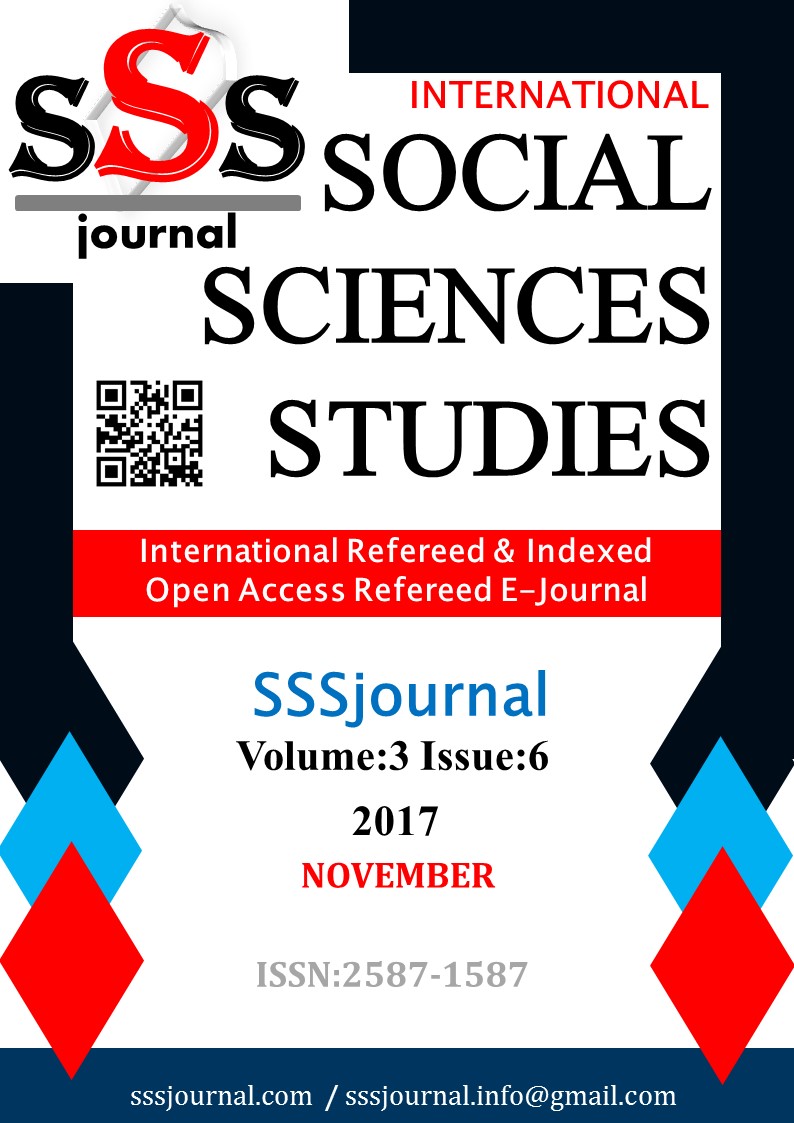Author :
Abstract
Bu çalışmada, 2015 yılı için Türkiye’de illere göre iç göçün belirleyicilerini tespit etmek amacıyla, mekânsal komşuluk ilişkisinin net göç üzerine etkisi mekânsal hata modeli (SEM) kullanılarak araştırılmıştır. Türkiye’de illerin komşularıyla birbirine yakın düzeyde net göçe sahip olma eğiliminde olduğu yani net göçte pozitif mekânsal otokorelasyon olduğu tespit edilmiştir. Tarımın iç göç üzerindeki etkisini ölçmek için toplam işlenen tarım alanı, eğitim için üniversite ve üzeri eğitime sahip olan bireylerin toplam nüfusa oranı alınmıştır. Bireylerin serveti, toplam konut satışları ve bin kişi başına düşen otomobil sayısı ile modele yansıtılmıştır. Sanayi sektörünün gelişmişliği ve bireylerin tüketim miktarı ise sanayide kullanılan kişi başına elektrik tüketimi değişkeni ile ifade edilmiştir. Turizm tesislerine geliş sayısı ise ildeki turizm düzeyini gösteren değişken olarak kullanılmıştır. Ticaret değişkeni için ihracat miktarı ele alınmış ve ildeki güvenlik düzeyini göstermek için cezaevine giren toplam hükümlü sayısı kullanılmıştır. Elde edilen bulgulara göre tarım alanı ve suç oranları net göçü negatif olarak etkilemektedir. Ayrıca toplumdaki eğitim düzeyi, servet, sanayi, turizm ve ticaret arttıkça net göç artmaktadır.
Keywords
Abstract
In this study, the effect of spatial neighborhood relations on the net migration was investigated by using the Spatial Error Model (SEM) in order to determine the determinants of internal migration according to the provinces in Turkey in 2015. It has been determined that the provinces tend to have close net migration level with their neighbors in Turkey, that is, the positive spatial autocorrelation has existed in the net migration. It is taken the total cultivated agricultural land in order to measure the impact of agriculture on internal migration and the ratios of the total population of individuals who have had undergraduate or graduate for education. The wealth of individuals was reflected the model by the total housing sales and the number of cars per thousand people. The development of the industrial sector and the amount of the consumption was expressed by per capita electricity consumption variable. The number of arrivals in the tourism facilities was used as the variable indicating the level of tourism in the province. The export volume was considered for the trade variable and the total number of convicts being imprisoned was used to indicate the level of security. The finding results show that agriculture field and crime rates affect net migration negatively. Also, as the level of education, wealth, industry, tourism and trade increases net migration increases.
Keywords
- Anselin, L. (1995). Local Indicators of Spatial Association – LISA. Geographical Analysis, 27(2), 93–115.
- Anselin, L. (1995). Local Indicators of Spatial Association – LISA. Geographical Analysis, 27(2), 93–115. Anselin, L., Syabri, I., & Kho, Y. (2005). GeoDa: An Introduction to Spatial Data Analysis. Urbana.
- Bahar, O., & Bingöl, F. K. (2010). Türkiye’de İç Göç Hareketlerinin İstihdam Ve İşgücü Piyasalarına Etkileri. Süleyman Demirel Üniversitesi İktisadi ve İdari Bilimler Fakültesi Dergisi, 15(2), 43–61.
- Bülbül, S., & Köse, A. (2010). Türkiye’de Bölgelerarası İç Göç Hareketlerinin Çok Boyutlu Ölçekleme Yöntemi ile İncelenmesi. İstanbul Üniversitesi İşletme Fakültesi Dergisi, 39(1), 75–94.
- Fahr, R., & Sunde, U. (2006). Spatial mobility and competition for jobs: Some theory and evidence for Western Germany. Regional Science and Urban Economics, 36, 803–825.
- Gökdoğan Gül, T. (2014). Türkiye İçin İstihdamın Belirleyicileri: İBBS-2 Bölge Düzeyi, Mekansal Analiz Uygulaması. Dokuz Eylül Üniversitesi İktisadi ve İdari Bilimler Fakültesi Dergisi, 29(1), 105–135.
- Hering, L., & Poncet, S. (2010). Income Per Capita Inequality in China: The Role of Economic Geography and Spatial Interactions. The World Economy, 655–679.
- Kırdar, M. G., & Saracoğlu, D. Ş. (2012). İç Göç, Bölgesel Yakınsama Sorunu ve Ekonomik Büyüme: Türkiye Örneği (No. 2012/75). Ankara.
- LeSage, J. P. (2004). Mapping in Matlab. Toledo.
- Lesage, J., & Pace, R. K. (2009). Introduction to Spatial Econometrics. (N. Balakrishnan & W. R. Schucany, Eds.). Boca Raton: Taylor & Francis Group, LLC.
- Munro, J. M. (1974). Migration in Turkey. Economic Development and Cultural Change, 22(4), 634–653.
- Nistor, A. (2009). Assessing the Effectiveness of Human Capital Investments on the Regional Unemployment Rate in the United States: 1990 and 2000. International Regional Science Review, 32(1), 65–91.
- Ogura, L. M. (2010). Effects of Urban Growth Controls on Intercity Commuting. Urban Studies, 47(10), 2173– TUİK. Türkiye İstatistik Kurumu, http://www.tuik.gov.tr.
- Tutar, H., & Özyakışır, D. (2013). TRA2 Bölgesinden İstanbul’a Göç Hareketlerinin Nedenlerine İlişkin Bir Araştırma. Sosyoloji Konferansları, 47(1), 31–58.
- Vakulenko, E. (2016). Does migration lead to regional convergence in Russia? Int. J. Economic Policy in Emerging Economies, 9(1), 1–25.
- Yakar, M. (2013a). Türkiye’de Yurtdışı Doğumlu Nüfusun Gelişimi ve Dağılışı. International Journal of Human Sciences, 10(1), 494–523.
- Yakar, M. (2013b). XXI. Yüzyılın Başında Türkiye’de İller Arası Göçlerin Mekânsal ve İstatiksel Analizi. Journal of World of Turks, 5(3), 239–263.
- Zeren, F., & Kılınç Savrul, B. (2012). Türkiye’de Şehirleşmeyi Etkileyen Faktörler: Mekansal Ekonometri Analizi. Journal of Yasar University, 28(7), 4749–4765.





